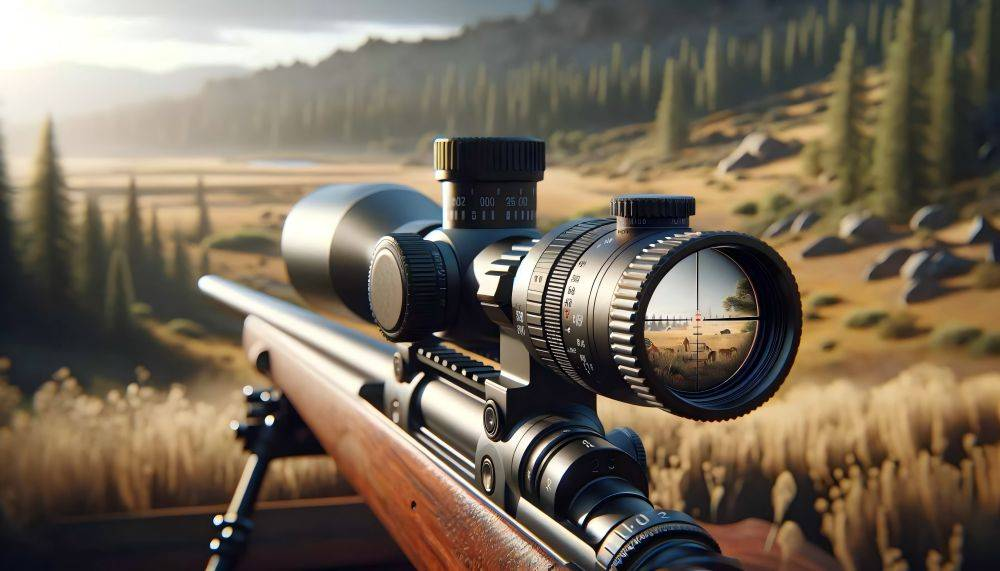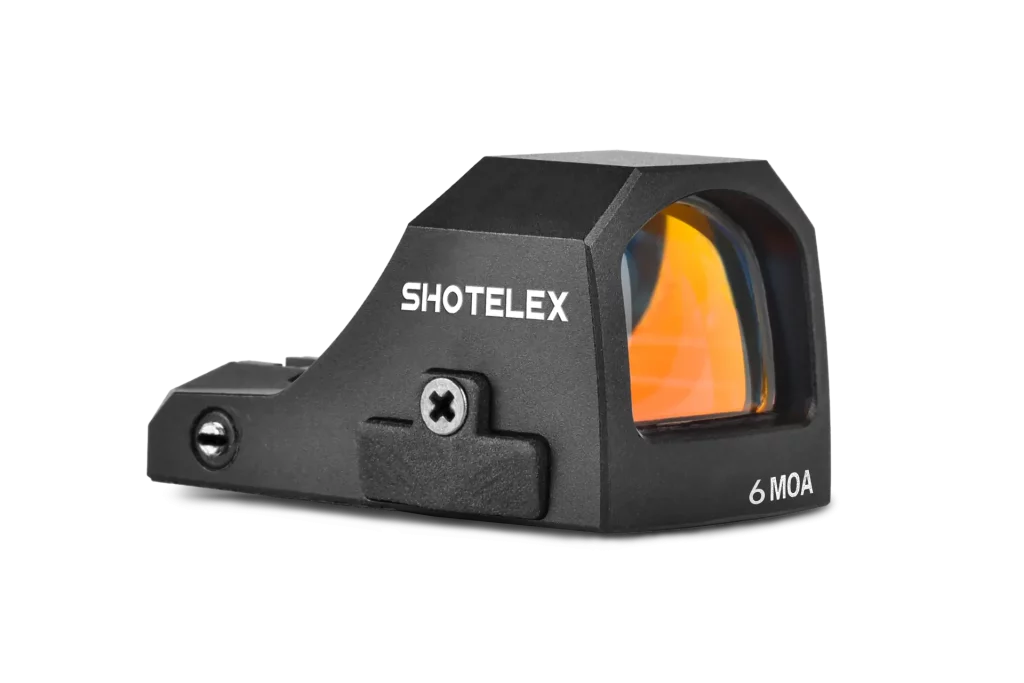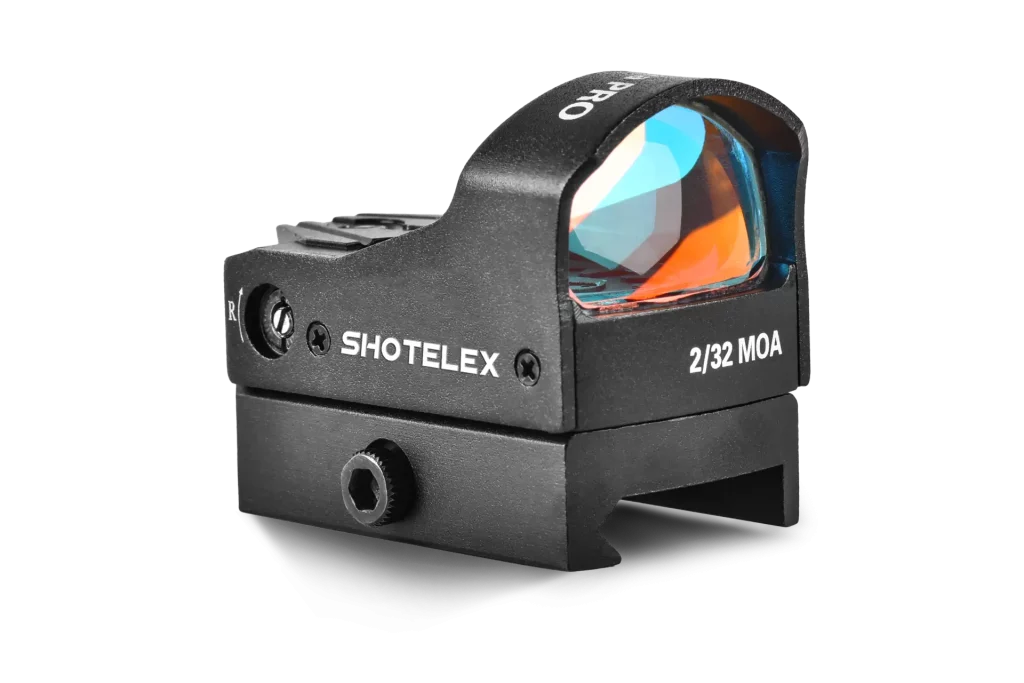How to Choose the Right Magnification for Hunting Riflescopes?
Hunting riflescopes are precision instrument that significantly impact your success in the field. One of the most critical factors to consider when selecting a scope is its magnification power. Magnification determines how much larger a distant object appears through the scope’s lenses. Understanding the nuances of magnification is essential to ensure you choose the right scope for your specific hunting needs.

What is Magnification?
Magnification refers to the power of a riflescope to make distant objects appear closer. For example, a 4x magnification means the target appears four times closer than it would to the naked eye. This feature allows hunters to see greater detail, improving their ability to identify targets and place accurate shots.
Magnification is expressed as a range (e.g., 3-9x) or a fixed value (e.g., 10x). Variable magnification scopes allow hunters to adjust the zoom level for different scenarios, while fixed magnification scopes offer simplicity and reliability.
What Factors Affect Magnification Choice?
Several factors should be considered when selecting the appropriate magnification for a hunting riflescope:
1. Hunting Environment
Open Fields vs. Wooded Areas
Open fields typically require higher magnification to spot and engage targets over long distances. In contrast, wooded areas demand a wider field of view and lower magnification for quick target acquisition among dense foliage.
Daytime vs. Low-Light Conditions
High magnification often reduces the brightness of the image, which can be a disadvantage in low-light conditions such as dawn or dusk. Lower magnification scopes tend to perform better in dim lighting by providing a brighter and clearer image.
2. Target Distance
Close-Range Hunting vs. Long-Range Shooting
Close-range hunting, such as for deer in dense woods, benefits from lower magnification (e.g., 3-5x), as it allows for faster sighting and tracking of moving targets. Long-range shooting for animals like elk or antelope often requires higher magnification (e.g., 10-12x) to clearly see and aim at distant targets.
3. Personal Preference
Shooter’s Comfort Level with Different Magnifications
Every hunter has a unique level of comfort with magnification settings. Some may prefer the simplicity of a fixed-power scope, while others value the flexibility of variable magnification.
Eye Relief Requirements
Higher magnification scopes may have reduced eye relief, the distance between the scope and your eye. This can impact comfort, especially when using high-recoil firearms. Choose a magnification range that provides adequate eye relief for your setup.

Popular Magnification Ranges for Different Hunting Scenarios
Choosing the right magnification often depends on your specific hunting needs. Below are some common magnification ranges and their best uses:
1. Low-Power Variable Scope (3-9x)
- Versatility: These scopes are ideal for hunters who need flexibility to switch between close-range and medium-range shooting.
- Typical Use: Commonly used in wooded environments and for game like deer, where ranges vary between 50 and 200 yards.
- Advantages: Combines a broad FOV at lower settings with enough magnification for medium-distance precision.
2. Medium-Power Variable Scope (4-12x)
- Balanced Performance: This range offers a middle ground, suitable for medium-range to long-range hunting.
- Typical Use: Great for open fields or hilly terrains where distances may range from 100 to 300 yards.
- Advantages: Maintains a decent FOV at lower powers while providing the clarity needed for longer shots.
3. High-Power Fixed Scope (10x or 12x)
- Specialized Use: These scopes are designed for long-range hunting where maximum detail is required.
- Typical Use: Ideal for hunting stationary targets at distances exceeding 300 yards, such as in prairie environments or during varmint control.
- Limitations: The narrow FOV and fixed magnification make these less suitable for close-range or fast-moving targets.

Tips for Choosing the Right Magnification of hunting riflescopes
Choosing the right magnification for a hunting riflescope is essential to optimize your performance in various hunting scenarios. Here are some tips to guide your decision:
1. Understand Your Hunting Environment
Close-Range Hunting (Dense Forests):
- Opt for low magnification (1x to 4x).
- Provides a wide field of view, allowing quick target acquisition in dense cover.
- Ideal for hunting deer, hogs, or other game at distances under 100 yards.
Mid-Range Hunting (Open Woodlands, Brush):
- Choose moderate magnification (3x to 9x or 4x to 12x).
- Balances field of view and precision for shots between 100–300 yards.
Long-Range Hunting (Open Plains, Mountains):
- Higher magnification (10x to 20x or more) is suitable.
- Enables precise aiming at distances beyond 300 yards.
- Ensure the scope has clear optics to prevent image distortion at high magnification.
2. Match Magnification to Game Size
Small Game or Varmint Hunting (e.g., coyotes, rabbits):
- Requires higher magnification for smaller targets at a distance.
- A scope in the 6x to 18x range can be effective.
Large Game (e.g., elk, moose, deer):
- Lower to moderate magnification is sufficient since the targets are larger.
- Typically, a 3x to 9x or 4x to 16x scope works well.
3. Consider Your Shooting Stability
Static Shooting (Prone, Bipod, Benchrest):
- Higher magnification is practical since you’ll have more stability.
Dynamic Shooting (Offhand, Moving Targets):
- Stick to lower magnification for better tracking and less wobble.
4. Factor in Weather and Light Conditions
- Lower magnification scopes (1x to 6x) tend to gather light better in low-light conditions.
- High magnification can darken the image in poor lighting, so prioritize quality optics with larger objective lenses (e.g., 50mm or larger) for early morning or dusk hunts.
5. Look for Variable Magnification
- A variable-power scope (e.g., 3-9x, 4-16x) gives flexibility for different ranges and hunting scenarios.
- It allows you to start at low magnification for scanning and increase it for precise shots.
6. Test for Personal Preference
- Visit a store and look through different scopes.
- Consider eye relief, ease of focus, and clarity at various magnifications.
- Ensure the magnification feels natural for your hunting style.
7. Keep Weight and Size in Mind
- High-magnification scopes are heavier and bulkier.
- Choose a scope that balances functionality and ease of carrying for extended hunts.
8. Don’t Over-Magnify
- Higher magnification isn’t always better. Excessive magnification reduces the field of view, making it harder to locate or track targets quickly.
- A scope with too much zoom can make close shots challenging.
General Recommendation Chart
| Hunting Type | Distance | Magnification |
| Dense Woods (Deer) | Under 100 yards | 1-4x |
| Brush/Open Woodlands | 100–300 yards | 3-9x, 4-12x |
| Open Plains (Varmints) | 200–500 yards | 6-18x, 6-24x |
| Mountain Hunts (Elk) | 300+ yards | 10-20x+ |
Choosing the right riflescope magnification ensures accuracy and efficiency while hunting. Remember, quality optics matter as much as magnification—always prioritize clarity, durability, and light-gathering capabilities.

Which Hunting Riflescope Brand Can Be the Top Choice for You?
When it comes to dependable hunting optics, Shotelex – one of China’s top leading riflescope manufacturers – whose hunting riflescopes can be the first choice for you. Renowned for their precision engineering and superior optical quality, Shotelex offers a range of scopes designed to meet the needs of both novice and experienced hunters.
- Wide Magnification Options: Shotelex provides a variety of magnification ranges, ensuring there’s a perfect scope for every hunting scenario.
- Exceptional Durability: Built to withstand rugged conditions, Shotelex scopes are waterproof, shockproof, and fog-proof.
- Advanced Lens Coatings: Multi-coated lenses enhance light transmission, delivering bright, clear images even in low-light conditions.
- User-Friendly Design: With intuitive adjustment controls and ample eye relief, Shotelex scopes are comfortable and easy to use.
Final Thoughts
Selecting the correct magnification for your hunting riflescope is about striking a balance between environmental demands, personal comfort, and practical utility. Remember, the goal is to enhance your hunting experience by ensuring clear, accurate sightlines regardless of the challenge. By taking time to understand and experiment with different options, you’ll find the magnification setting that optimally aligns with your unique hunting scenarios, ultimately improving your chances of success in the wild.member, a good scope not only elevates accuracy but also makes each outing more enjoyable and successful.









